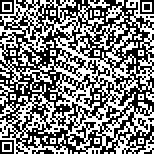| This article has been:Browse 1564Times Download 2815Times |

scan it! |
|
|
| DOI:10.13522/j.cnki.ggps.2019378 |
|
| Optimizing Channel Network Schedules Using the DEM and Logistic Functions: A Case Study Based on the Zhouqiao Irrigation District |
|
LIU Yong, JIAO Xiyun, CHENG Minghan, LI Jiang
|
|
1.College of Agricultural Engineering, Hohai University, Nanjing 210098, China;2. Key Laboratory of Hydrology-water Resources and Hydraulic Engineering, Hohai University, Nanjing 210098, China;
3. Collaborative Innovation Center for Water Security and Water Science, Hohai University, Nanjing 210098, China
|
| Abstract: |
| 【Background】The operation of many gravity-driven irrigation districts in China is affected by a multitude of factors and improving their management is essential to increasing water use efficiency of the irrigation districts. Existing work on channel network in irrigation districts focused on economic return and reducing seepage loss, while most of them have overlooked the role of the gravity-driven flow in the system. 【Objective】The purpose of this paper is to show how irrigation areas in gravity-driven irrigation districts can be improved by optimizing water scheduling in its channel network. We took the Zhouqiao Irrigation District as a demonstrating example of the proposed model.【Method】The logistic function based on the digital elevation model was used to establish a self-irrigation model for Zhouqiao Irrigation District. We compared three irrigation schedules: Strip-based rotational irrigation, segment-based rotational irrigation and area-based rotational irrigation, with the currently used rotational irrigation taken as the control. The simulation results were combined with seepage loss and conveyance efficiency to compare the performance of the four schedules.【Result】The correlation coefficient and MBE between the elevation calculated using the digital elevation model and the measured data were 0.96 and 0.27 m respectively, indicating that the model can be used to calculate the self-irrigation rate and the water level at the sluice gate. The determination coefficient of the self-irrigation rate calculated from the model for each block was above 0.74. We simulated the four types of channel networks, finding that the self-irrigation rate under area-based rotational irrigation could reach 97.11%, reduced the seepage loss by 54.63% and improved the water use efficiency of the channel network to 0.78 compared to the CK.【Conclusion】Area-based rotational irrigation was most optimal for gravity-driven channel networks and it can be combined with the self-irrigation rate model to improve irrigation water management in Zhouqiao Irrigation District and other irrigation districts with water flow in them driven by gravity. |
| Key words: digital elevation model; Zhouqiao irrigation district; self-irrigation flow rate; channel network |
|
|